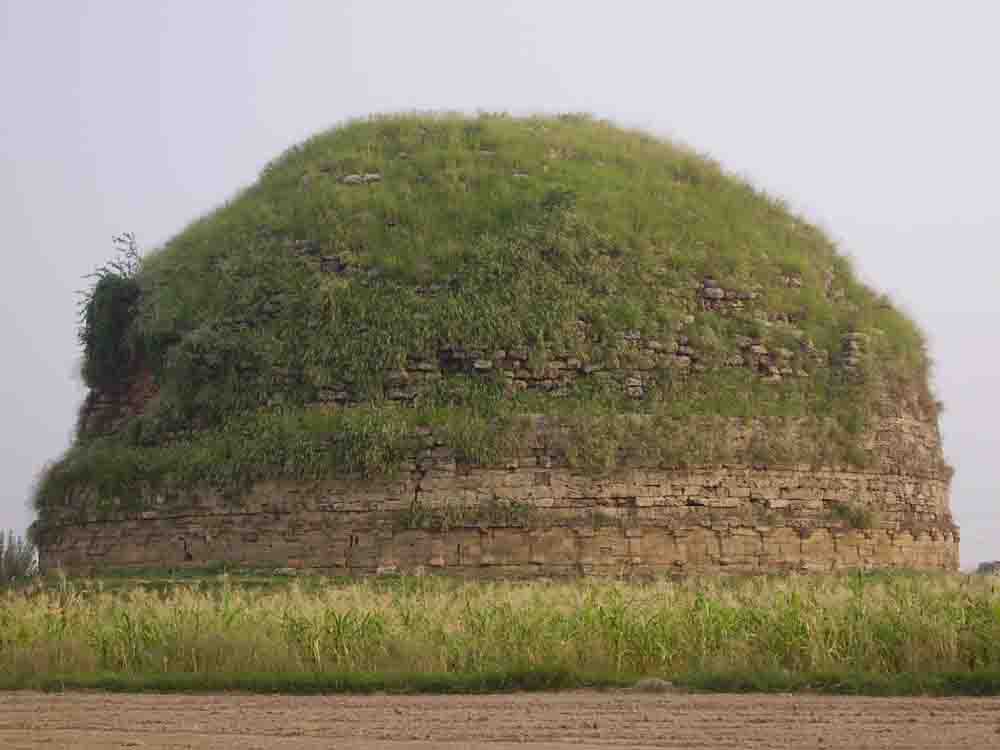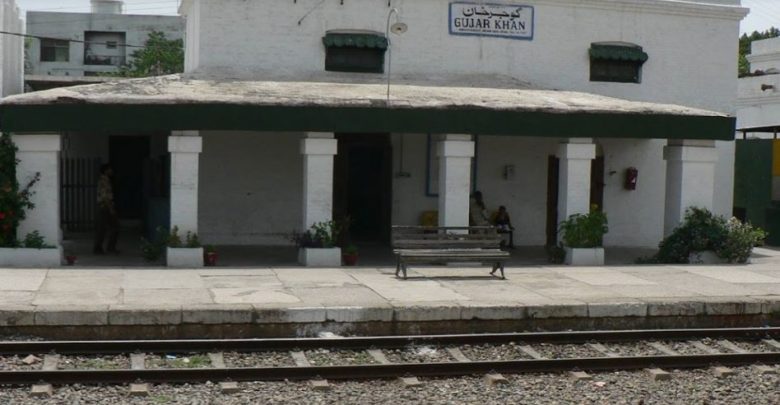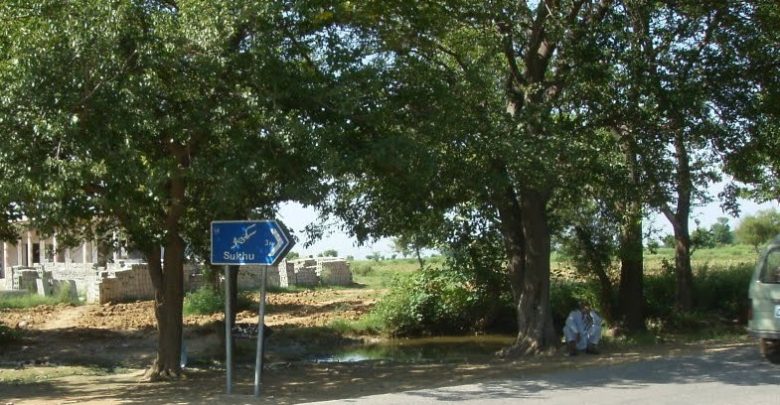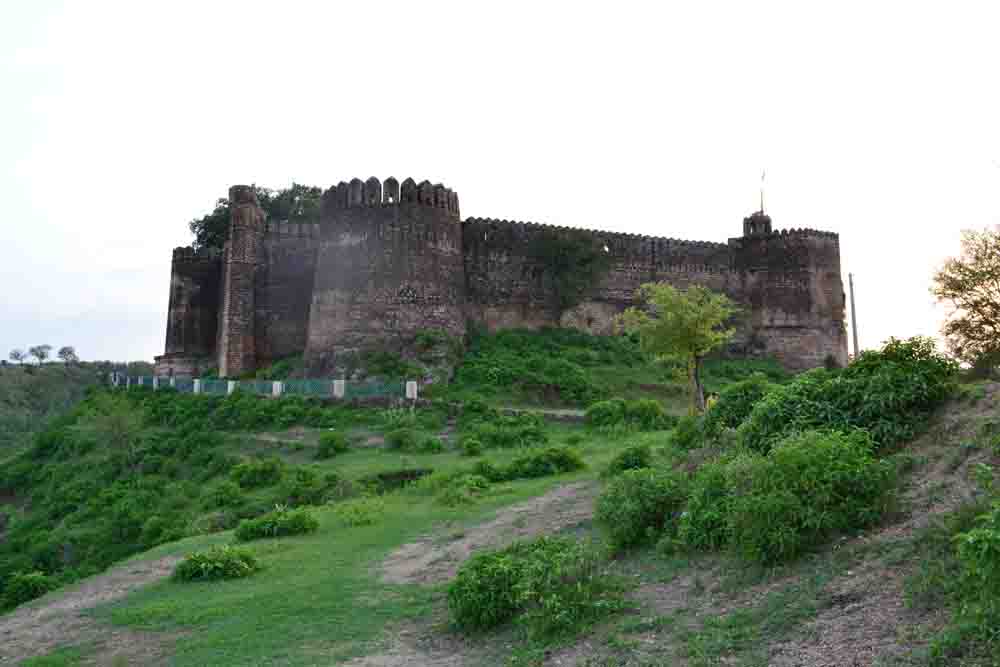

Rawalpindi remained under the rule of the Gakkhars until Muqarrab Khan, the last Gakkhar ruler, was defeated by the Sikhs under Sardar Milka Singh in 1765. The town, however, being on an invasion route, could not prosper and remained deserted until Jhanda Khan, another Gakhar Chief, restored it and named it Rawalpindi after the village Rawal in 1493. The first Muslim invader, Mahmud of Ghazni (979-1030), gave the ruined city to a Gakhar Chief, Kai Gohar. It appears that the ancient city went into oblivion as a result of the White Hun devastation. Known within historical times as Fatehpur Baori, Rawalpindi fell into decay during one of the Mongol invasions in the fourteenth century. Graeco-Bactrian coins, together with ancient bricks, occur over an area of 500 ha (2 mi²). Sir Alexander Cunningham identified certain ruins on the site of the cantonment with the ancient city of Ganjipur or Gajnipur, the capital of the Bhatti tribe in the ages preceding the Christian era. The nearby town of Taxila has another significance according to the Guinness Book of World Records it has the world's oldest university - Takshashila University. The material remains found at the site prove the existence of a Buddhist establishment contemporary to Taxila and of a Vedic civilisation. Rawalpindi has been inhabited for thousands of years, it is believed that a distinct culture flourished on this plateau as far in c1000BC. It is also responsible for defining the geographical features of the city and provides the a rough idea of how the city could be expanded in the next 20 years. Though Rawalpindi has expanded mostly due to explosive population pressure, Nespak (NESPAK) has been given the responsibility to render the urban planning services-analysing available data and other documents like master plans, structure plans, outline development plans and census reports. Rawalpindi also maintains strong links with the Pahari- Potwari speaking people of neighbouring Azad Kashmir who have many businesses within the city and region. Islamabad International Airport is actually located in Rawalpindi and serves both cities. The city is home to several industries and factories. Numerous shopping bazaars, parks and a cosmopolitan population attract shoppers from all over Pakistan and abroad. Rawalpindi is also a prime destination for the expatriate community of Azad Jammu and Kashmir. Many tourists use the city as a stop before traveling towards the northern areas. Rawalpindi, named after Raja Pindi, is a bustling city on the northernmost part of the Punjab province, strategically located between the NWFP and Azad Jammu and Kashmir. Rawalpindi is the military headquarters of the Pakistani Armed Forces. The total area of the city is approximately 154 square kilometres (59 sq mi). It is the administrative seat of the Rawalpindi District.

Rawalpindi is located in the northernmost part of the Punjab province, 275 km (171 mi) to the north-west of Lahore. In the 1950s, Rawalpindi was smaller than Hyderabad and Multan, but the city's economy received a boost during the building of Islamabad (1959–1969), during which time Rawalpindi served as the national capital and its population increased from 180,000 at the time of independence to over 4.5 million in 2007.


Rawalpindi is the fourth largest city in Pakistan after Karachi, Lahore and Faisalabad. Rawalpindi ( Urdu: راولپنڈی, Rāwalpindī), locally known as Pindi, is a city in the Pothohar region of Pakistan near Pakistan's capital city of Islamabad, in the province of Punjab.


 0 kommentar(er)
0 kommentar(er)
